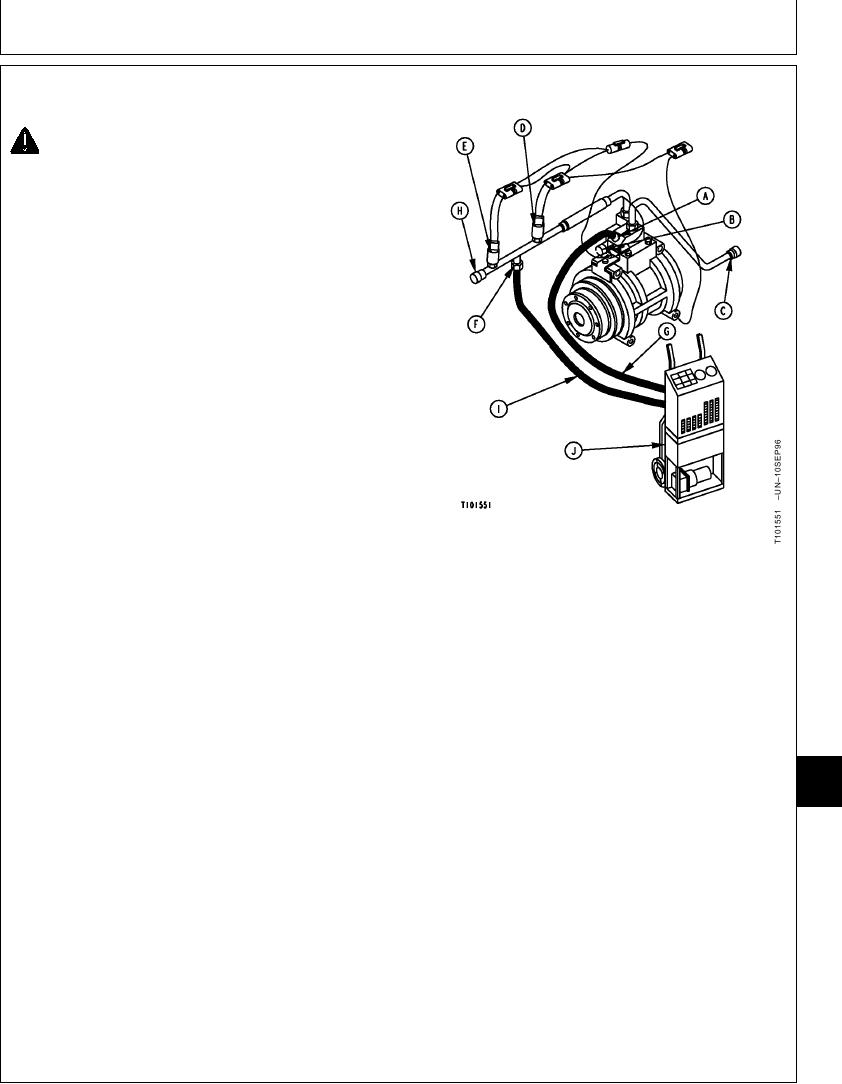
TM 5-3805-280-24-2
Heating and Air Conditioning
EVACUATE R134A SYSTEM
CAUTION: Do not remove high pressure relief
valve (B). Air conditioning system will
discharge rapidly causing possible injury.
IMPORTANT: Use correct refrigerant recovery,
recycling and charging stations. DO
NOT mix refrigerant, hoses, fittings,
components or refrigerant oils.
Do not run compressor while
evacuating.
1. Connect refrigerant recovery, recycling and charging
station. (See installation procedure in this group.)
2. Open low and high pressure valves on refrigerant
recovery, recycling and charging station.
3. Follow the manufacturer's instructions and evacuate
the system.
4. Evacuate system until low pressure gauge registers 98
kPa (980 mbar) (29 in. Hg) vacuum.
If 98 kPa (980 mbar) (29 in. Hg) vacuum cannot be
A--Low Pressure Test Port
obtained in 15 minutes, test the system for leaks. (See
B--High Pressure Relief Valve
Leak Testing in Group 9031-25.) Correct all leaks as
C--Low Pressure Hose
D--Low Pressure Switch
required.
E--High Pressure Switch
F--High Pressure Quick-Disconnect
NOTE: The vacuum specifications listed are for sea level
G--Blue Hose
conditions. Subtract 3.4 kPa (34 mbar) (1 in. Hg)
H--High Pressure Hose
from 98 kPa (980 mbar) (29 in. Hg) for each 300
I--Red Hose
J--Refrigerant Recovery/Recycling and Charging
m (1000 ft) elevation above sea level.
Station
5. When vacuum is 98 kPa (980 mbar) (29 in. Hg), close
low-side and high-side valves. Turn vacuum pump off.
18
1830
9
6. If the vacuum decreases more than 3.4 kPa (34 mbar)
(1 in. Hg) in 5 minutes, there is a leak in the system.
7. Repair leak.
8. Start to evacuate.
9. Open low-side and high-side valves.
Continued on next page
TX,18,UU3825
1921SEP981/2
18-29

